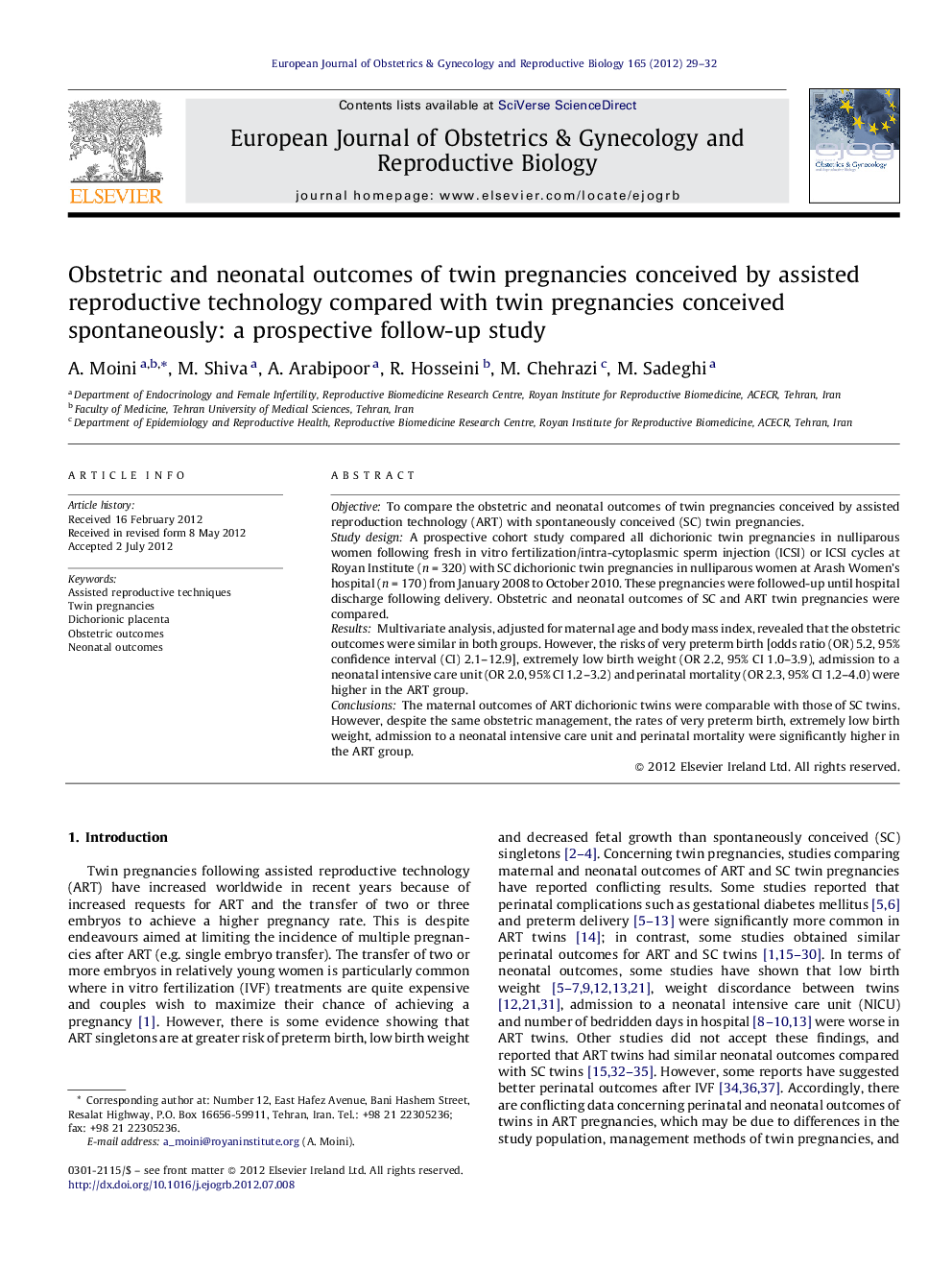| Article ID | Journal | Published Year | Pages | File Type |
|---|---|---|---|---|
| 3920245 | European Journal of Obstetrics & Gynecology and Reproductive Biology | 2012 | 4 Pages |
ObjectiveTo compare the obstetric and neonatal outcomes of twin pregnancies conceived by assisted reproduction technology (ART) with spontaneously conceived (SC) twin pregnancies.Study designA prospective cohort study compared all dichorionic twin pregnancies in nulliparous women following fresh in vitro fertilization/intra-cytoplasmic sperm injection (ICSI) or ICSI cycles at Royan Institute (n = 320) with SC dichorionic twin pregnancies in nulliparous women at Arash Women's hospital (n = 170) from January 2008 to October 2010. These pregnancies were followed-up until hospital discharge following delivery. Obstetric and neonatal outcomes of SC and ART twin pregnancies were compared.ResultsMultivariate analysis, adjusted for maternal age and body mass index, revealed that the obstetric outcomes were similar in both groups. However, the risks of very preterm birth [odds ratio (OR) 5.2, 95% confidence interval (CI) 2.1–12.9], extremely low birth weight (OR 2.2, 95% CI 1.0–3.9), admission to a neonatal intensive care unit (OR 2.0, 95% CI 1.2–3.2) and perinatal mortality (OR 2.3, 95% CI 1.2–4.0) were higher in the ART group.ConclusionsThe maternal outcomes of ART dichorionic twins were comparable with those of SC twins. However, despite the same obstetric management, the rates of very preterm birth, extremely low birth weight, admission to a neonatal intensive care unit and perinatal mortality were significantly higher in the ART group.
